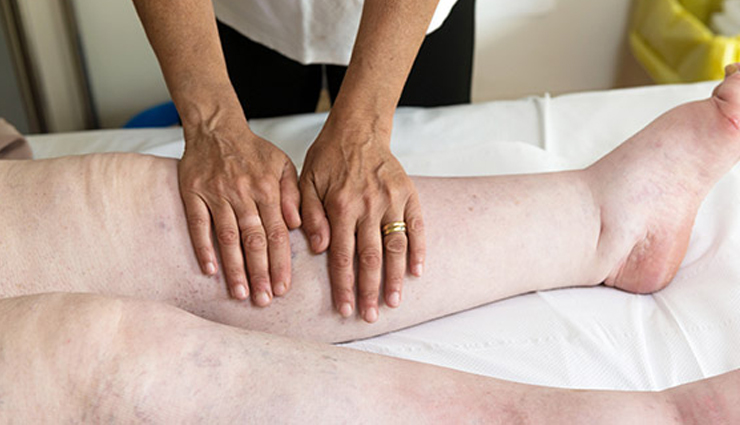- Home›
- Healthy Living›
- What Is Elephantiasis? How To Treat?
What Is Elephantiasis? How To Treat?
By: Priyanka Maheshwari Sun, 02 June 2024 12:02:55

Elephantiasis, also known as lymphatic filariasis, is a parasitic disease caused by infection with roundworms of the Filarioidea type. These parasites are transmitted to humans through the bites of infected mosquitoes. The disease primarily affects the lymphatic system, leading to severe swelling and enlargement of body parts, most commonly the legs, but it can also affect the arms, breasts, and genitals.
Here are some key points about elephantiasis:
- Cause: The disease is caused by three types of filarial worms: Wuchereria bancrofti, Brugia malayi, and Brugia timori.
- Transmission: It is transmitted by mosquitoes, which carry the microscopic worms from person to person.
- Symptoms:
Early stage: Often asymptomatic or mild symptoms, such as lymphedema (swelling) and occasional fever.
Advanced stage: Severe and chronic swelling, skin thickening, and enlargement of the affected areas. This can lead to significant disability and social stigma.
- Diagnosis: The disease is typically diagnosed through the detection of microfilariae (the larval stage of the parasite) in the blood. Blood samples are often taken at night when the microfilariae are most active.
- Treatment:
Medications: Antiparasitic drugs such as diethylcarbamazine (DEC), ivermectin, and albendazole are used to kill the parasites.
Managing symptoms: Treatment also focuses on managing symptoms and preventing secondary infections. This can include hygiene measures, skin care, and in some cases, surgery.
- Prevention: Preventive measures include mosquito control efforts, such as using insecticide-treated nets, indoor residual spraying, and mass drug administration (MDA) programs in endemic areas to reduce the prevalence of the parasites.
- Global impact: Elephantiasis is a significant public health issue in many tropical and subtropical regions, particularly in Africa, Southeast Asia, the Western Pacific, and parts of the Americas.
Efforts to control and eliminate lymphatic filariasis are ongoing, with the World Health Organization (WHO) leading initiatives to reduce the burden of the disease through mass drug administration and other public health interventions.
Treating elephantiasis involves a combination of antiparasitic medications, managing symptoms, preventing secondary infections, and in some cases, surgical interventions. Here are the main approaches:

# Antiparasitic Medications
* Diethylcarbamazine (DEC): This is the primary medication used to kill the microfilariae and adult worms.
* Ivermectin: Often used in combination with albendazole, ivermectin is effective in killing the microfilariae.
* Albendazole: Commonly used in combination with DEC or ivermectin to improve treatment efficacy.

# Lymphedema Management:
* Hygiene: Regular washing of the affected areas with soap and water to prevent secondary infections.
* Elevation: Elevating the swollen limb to reduce swelling.
* Exercise: Gentle exercise to promote lymphatic drainage.
* Compression Bandaging: Using compression bandages or stockings to help reduce swelling.

# Skin Care:
* Antibiotics: To treat and prevent bacterial infections, which are common due to compromised skin integrity.
* Moisturizers: To keep the skin hydrated and prevent cracking.
# Preventing Secondary Infections
* Antibiotics: For acute bacterial infections, antibiotics like doxycycline may be prescribed.
* Antifungal Treatments: For fungal infections that can occur due to compromised skin.
# Surgical Interventions
In severe cases where there is significant disfigurement or disability, surgical options might be considered:
* Debulking Surgery: To remove excess tissue.
* Lymphatic Surgery: To improve lymphatic drainage and reduce swelling.
Prevention Measures
# Mosquito Control:
* Insecticide-Treated Nets (ITNs): Sleeping under ITNs to prevent mosquito bites.
* Indoor Residual Spraying (IRS): Spraying insecticides inside homes.
* Mass Drug Administration (MDA): Regular administration of antiparasitic drugs in endemic areas to reduce the prevalence of the disease.
# Community and Lifestyle Modifications
* Education and Awareness: Educating affected communities about the importance of hygiene and proper management techniques.
* Support Groups: Joining support groups for psychological support and to share effective management strategies.
# Regular Monitoring and Follow-Up
* Medical Check-Ups: Regular follow-ups with healthcare providers to monitor the condition and manage any complications.
* Lymphatic Filariasis Elimination Programs: Participating in national and local health programs aimed at eliminating the disease.





